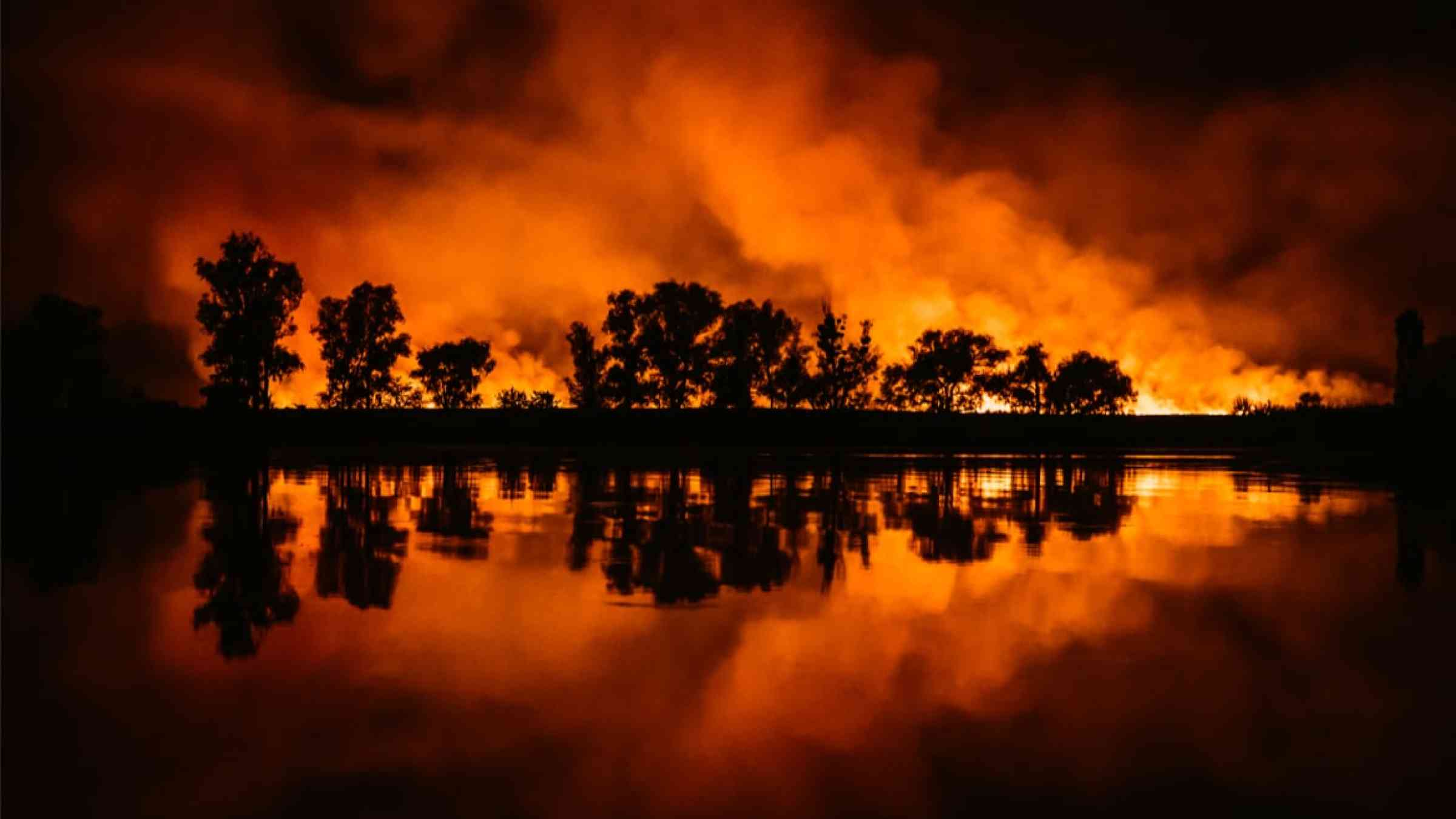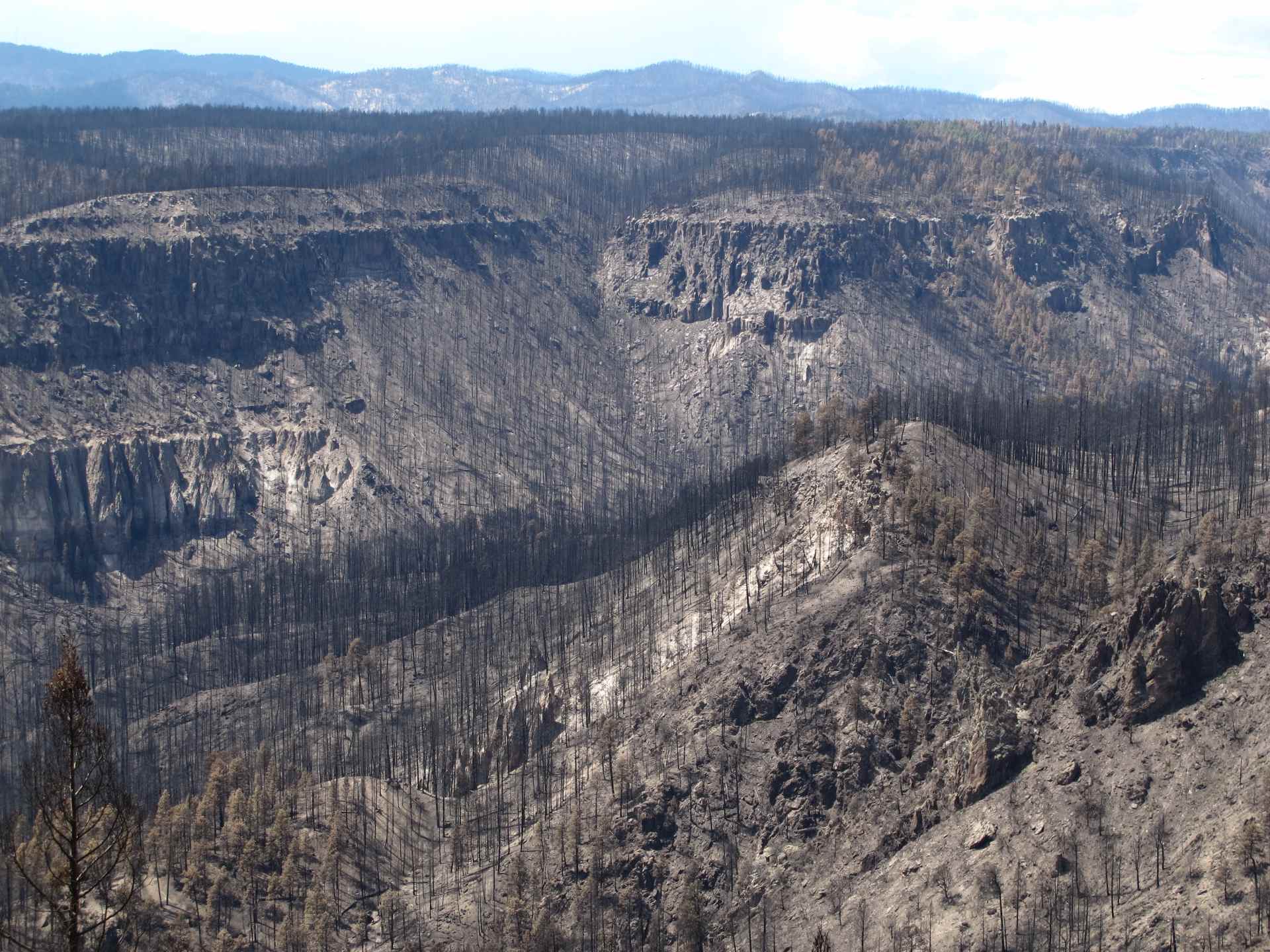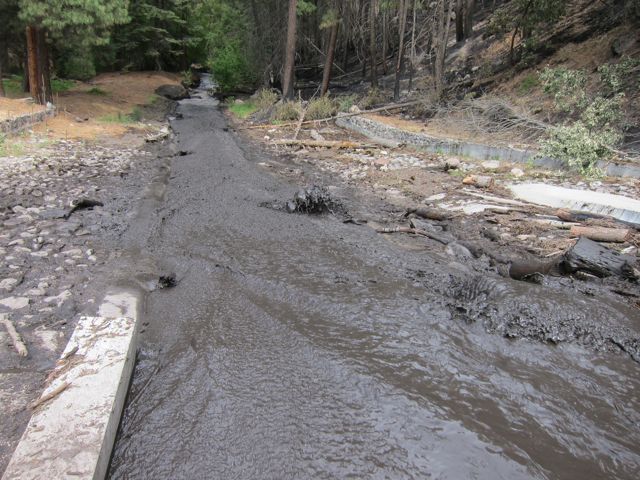Wildfires increasingly impact rivers and water supplies

- Wildfires are increasing in frequency, severity, duration and extent with potentially catastrophic impacts on river systems and water supplies.
- Scientists are quantifying these impacts and studying the underlying factors driving the susceptibility of landscapes to post-fire erosion in a changing climate.
- Recommended actions include: (1) rapid response water monitoring during and after fires, (2) citizen science and (3) machine learning to provide communities with data and predicted impacts in near real-time.
Globally, wildfires are increasing in severity, frequency, duration and extent. Recent examples from Australia, Brazil, Chile, South Africa, the United States, Canada, Siberia, the Euro-Mediterranean, even Sweden and Greenland, provide ample evidence. In a changing climate, wildfire activity is predicted to keep growing. What does this mean for our rivers and water supplies?
Associate Professor Ricardo González-Pinzón leads the Ecohydrology and Hydrosystems Lab at the University of New Mexico (UNM) and researches the hydrological impacts of wildfires. ‘In the Western US, wildfires often occur in forested mountain headwaters during spring and summer due to the combination of severe-to-extreme drought conditions on the land and strong winds,’ he said. ‘Wildfires strip the landscape of vegetation and groundcover, leaving soils susceptible to erosion when rain arrives’.
On the opposite side of the Pacific, University of Melbourne researchers Professor Patrick Lane and Associate Professor Gary Sheridan also study the aftermath of forest fires. ‘Melbourne’s water supply is largely sourced from forested catchments, so the city is highly susceptible to the impacts of wildfires - more so than any other city in Australia,’ explained Patrick.
‘Post-fire soils can be water repellent which increases the likelihood that they will erode as water runs off faster,’ said Gary. ‘If intense rain occurs on steep slopes soon after a severe wildfire then debris flows, which are like a flash flood or torrent of mud and debris, can deposit tonnes of sediment into the waterways below.’

How widespread is the impact of wildfires on rivers?
‘We have been quantifying the length of streams affected by forest fires in the western US,’ said Associate Professor González-Pinzón. His team’s findings have recently been published in the prestigious Nature Communications journal. In a world first, they estimated the total stream length impacted within burned areas across the western conterminous US over a period of three decades.
‘We analysed remote sensing, GIS, hydrography and burned area boundary datasets across a number of different ecoregions and identified that 6% of the length of streams was directly impacted by wildfires from 1984 to 2014,’ said Ricardo. ‘There was a highly significant increasing trend in the data over time and we conservatively estimate that for every one square kilometre of burned area, one kilometre of stream is impacted.’

What does this mean for water supplies?
‘Calculating the length of rivers directly impacted within burned areas is only part of the story as we know that the impacts of wildfires propagate far downstream,’ said Associate Professor González-Pinzón.
Following the massive 2011 Las Conchas Fire that burned some 630 square kilometres of forests, intense monsoonal rains caused catastrophic floods that dumped sediment, ash and debris into the downstream fluvial network. Research Assistant Professor David Van Horn and other colleagues at UNM were fortunate to have water quality monitoring sensors strategically placed along the Rio Grande River before, during and after the Las Conchas Fire. Those sensors captured the impacts of the fire on water quality along hundreds of kilometres downstream of the burned area, which forced the city of Albuquerque’s main drinking water facility to be taken offline for two months.
‘Since it was not cost-effective to remove the ash, burned materials and fine particles in the water by conventional water treatment, Albuquerque had to rely on its alternative groundwater extraction infrastructure and reserves,’ said Ricardo. ‘The fact that a city so far away from the fire was impacted confirmed that wildfires pose a major threat to aquatic systems with costly implications for water security.’
Ricardo and his team developed a simple model based on the Las Conchas fire data to estimate the longitudinal propagation of wildfire disturbances in terms of total stream length, which includes the length of stream within burned areas plus the length of stream affected downstream along the fluvial network. ‘Across the western US between 1984 and 2014, we estimated that on average 11% of the total stream length was impacted by wildfires. The Mediterranean California and Western Sierra Madre Piedmont ecoregions were the most affected with 25% and 21% of the total stream length being impacted by wildfires, respectively,’ he explained.
Associate Professor Gary Sheridan is complimentary of the approach taken by the team at UNM. ‘It’s a novel way of quantifying the impact at a landscape level,’ he said. The University of Melbourne team has recently been investigating links between aridity and erosion susceptibility, and also between drought, wildfires, debris flows and the El Niño–Southern Oscillation. ‘Erosion from forest fires can rework sediment far downstream and we believe this occurs for decades post-fire, so we’re trying to better understand what drives spatial patterns over time’, said Gary.
A call to action
In their Nature Communications paper, the UNM team identified some key actions to transform the acquisition of water quality data and support a more dynamic approach to incorporating aquatic systems into wildfire science. ‘We suggest that funding needs to be directed towards rapid response stream monitoring, including the training of teams that are able to respond immediately post-fire,’ said Ricardo. ‘This will require a shift to continuous funding at local, regional and national levels.’
Professor Patrick Lane agrees with the need for long-term funding. ‘During the 2019/20 wildfires in eastern Australia, we were inundated with requests for advice on what the impacts could be when the rainstorms began’, he said. ‘We were only able to help because we have had long-term funding for research and monitoring projects, including paired catchment studies that have been in place for decades.’
According to Ricardo, citizen science will be key in future events. ‘Many people in our communities have immense local knowledge and a vested interest in that they drink the water or fish in the streams - we should tap into that,’ he said. Ricardo believes there should also be a greater focus on monitoring along the full extent of river networks. His team is working on innovative solutions including multi-parameter sensors that could be rapidly deployed at relatively low cost, as well as machine learning and provision of data in near real-time. ‘We have learned a lot in the 10 years after the Las Conchas fire, but communities need to receive information and make decisions about the possible effects much faster.’